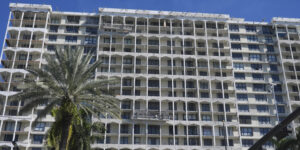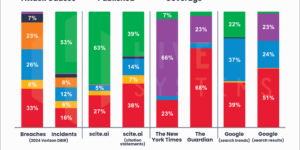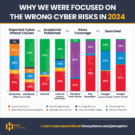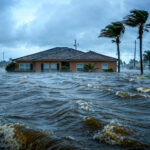Singapore’s civil aviation authority has asked airlines based in the city-state to review their risk assessment of conflict zones following the shooting down of a Malaysia Airlines jetliner over Ukraine last week.
The deaths of nearly 300 passengers and crew in the downing of Flight MH17 have shocked the aviation industry and prompted calls for a re-think on assessing the threat to planes flying thousands of meters above fighting on the ground.
Before the shooting down of the jet, which Western governments have blamed on Russian-backed separatists, the flight path it was following across eastern Ukraine was heavily used by airlines plying busy routes between Europeand Asia.
Singapore Airlines Ltd (SIA) was one of the heaviest users of the route in the week before the crash, along with other international carriers such as Lufthansa, Thai Airways, Qatar Airways and KLM.
“We note that following the MH17 incident, SIA had immediately re-routed their flights to avoid Ukrainian airspace,” said the Civil Aviation Authority of Singapore (CAAS) in an emailed response to questions from Reuters.
“CAAS has also since asked Singapore carriers to review their risk assessment on conflict areas.”
NO GLOBAL AGENCY
Singapore’s Changi Airport is a major hub for East-West air travel, and low cost carriers Tiger Airways, SIA’s Scoot and Jetstar Asia, a budget arm of Qantas Airways, are also based in the city-state.
In the days since the MH17 tragedy, flight tracking websites have shown the once-busy skies over eastern Ukraine empty of traffic, while aircraft crowd along routes across Turkey and the Black Sea to the south.
In a response to a letter in the Straits Times newspaper on Wednesday, Singapore Airlines senior vice president of flight operations Gerard Yeap said the airline had avoided Ukrainian airspace entirely since the disaster.
“There are several other parts of the world that we proactively avoid flying through, even though they are available for use,” he said. “This has long been our practice, and is the result of our continual assessment of advisories from the national authorities and aviation bodies.”
No single global body has overall responsibility for keeping the skies safe for civil aviation.
Ultimately it is up to individual nations to decide whether a threat exists and, if necessary close their airspace, although national civil aviation authorities can ban their domestic carriers from jurisdictions they consider unsafe.
“The industry has been operating on a system that had successfully worked for decades and which we honestly and genuinely believed was robust because years had proved it to be so,” said the chief executive of an Asian carrier who declined to be identified due to the sensitivity of the matter.
WAR ZONES
Airlines contacted by Reuters said they routinely look at advisories known as Notices to Airmen or “NOTAMs”, which include airspace restrictions issued by the authorities responsible for the airspace. They also consider weather conditions, the safety and security conditions of the airspace in which they intend to fly and advisories from international and regional bodies.
German carrier Lufthansa’s security desk has around 12 people who oversee a four-step risk analysis process that includes mapping general risks and assessing the probability of a targeted attack on its planes.
“Since April, for example, when European authorities recommended avoiding the Crimea because it was unclear which air traffic authorities were in charge, Lufthansa had not only been avoiding the Crimea, but also removed some airports in Ukraine from its alternative list (of airports for emergency use) because of the crisis there,” the airline said in a statement.
But it is not unusual for airlines to fly over war zones such as Afghanistan.
“Flying over contested territories such as Afghanistan was previously thought of as unproblematic because there were no weapons that could reach passenger planes at the altitudes they fly,” Joerg Handwerg, a board member at German pilots’ union Vereinigung Cockpit and an A320 captain, told Reuters.
Now, after MH17 was apparently brought down by a sophisticated anti-aircraft missile, there are calls for international bodies to play a greater role in assessing threats, although there is no consensus on how that might happen.
The International Air Transport Association (IATA), which represents airlines, said on Tuesday that governments should take the lead in any review, while two sources said representatives to the U.N. civil aviation body ICAO were considering whether it should expand its role and issue safety advisories.
Another possibility might be for IATA to issue warnings of relative danger, much like weather forecasters issuehurricane warnings, said Ron Bartsch, the chairman of aviation safety consultancy AvLaw International.
But Bartsch, a former head of safety at Qantas, said it was ultimately up to airlines themselves to ensure their flight paths were safe.
“They can’t rely on ICAO with advisories because they’re not timely enough,” he said. “These are things that are changing on a daily basis, almost an hourly basis, in terms of escalation.” (Additional reporting by Victoria Bryan in BERLIN, Alison Lampert in MONTREAL and Lincoln Feast in SYDNEY; Editing by Alex Richardson)




















 Study: Widening Gap Between Cyber Attack Causes, Public Perception
Study: Widening Gap Between Cyber Attack Causes, Public Perception  National Flood Insurance Program Authorized to Continue Through Mid-March
National Flood Insurance Program Authorized to Continue Through Mid-March  California Vocational School CEO Charged With 23 Counts of Insurance Fraud
California Vocational School CEO Charged With 23 Counts of Insurance Fraud  Mixed Bag: What Trump 2.0 Tariffs, DOGE Activities Mean For Insurers
Mixed Bag: What Trump 2.0 Tariffs, DOGE Activities Mean For Insurers 




